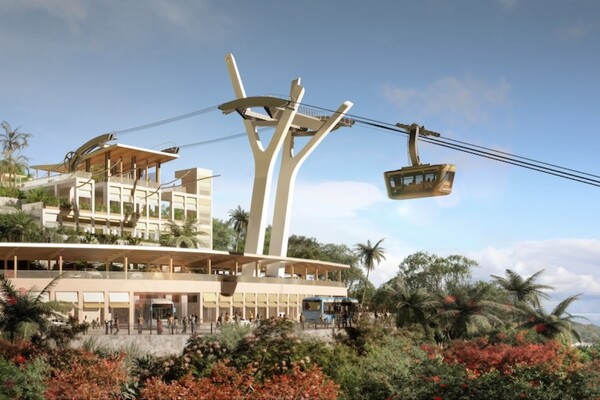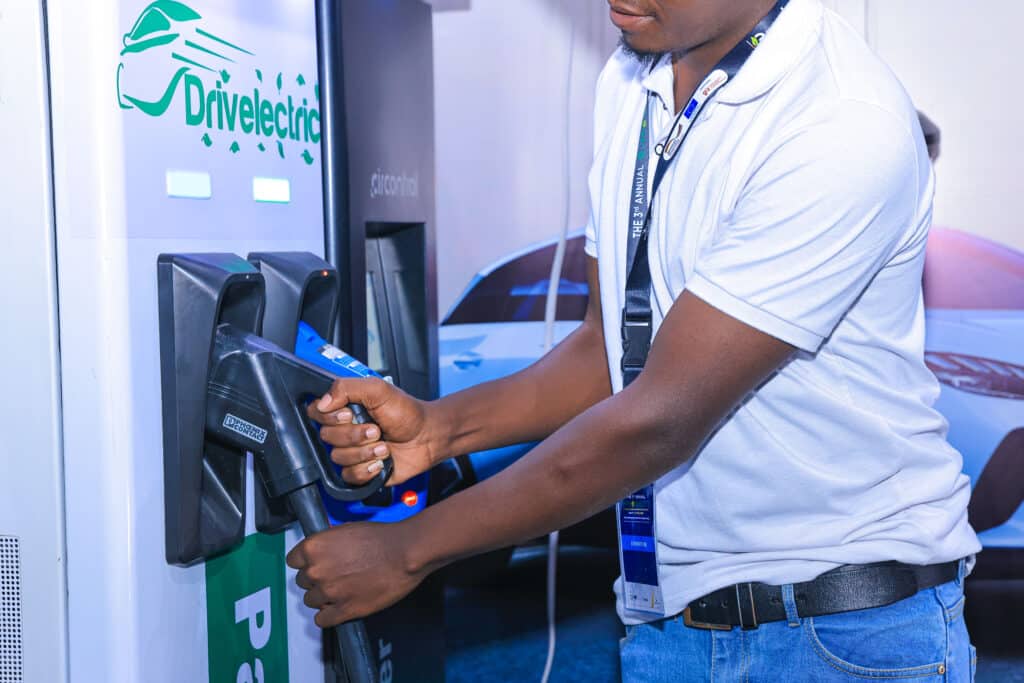Transport hubs – Net-zero energy urban cable car to launch in Saint-Denis – Smart Cities World

Urban Cable Car Project Report: Advancing Sustainable Development Goals
1.0 Project Overview
An analysis of the new urban cable car initiative reveals a significant infrastructure project designed to enhance urban mobility and sustainability. The project’s core components are detailed below:
- Project Type: Urban Aerial Cable Car System
- Route: Connecting the lower district of Bellepierre to the La Montagne plateau.
- Primary Objective: To provide thousands of local residents with a viable and efficient alternative to private automobile travel.
- Operational Efficiency: A projected transit time of four minutes between the two key districts.
- System Integration: The cable car will function as a central component of a comprehensive mobility hub, featuring a multimodal interchange to ensure seamless connectivity with other transport services.
2.0 Contribution to United Nations Sustainable Development Goals (SDGs)
The project is strategically aligned with several key UN Sustainable Development Goals, positioning it as a forward-thinking solution to modern urban challenges. The primary contributions are as follows:
-
SDG 11: Sustainable Cities and Communities
The initiative directly addresses Target 11.2, which aims to provide access to safe, affordable, accessible, and sustainable transport systems for all. By establishing a new public transit artery, the project:
- Enhances connectivity between residential areas and the wider urban network.
- Reduces traffic congestion and dependency on private vehicles.
- Promotes integrated urban and transport planning through the development of a multimodal hub.
-
SDG 13: Climate Action
By offering a low-emission alternative to car travel, the cable car system makes a direct contribution to climate change mitigation efforts. This aligns with the goal of integrating climate change measures into national policies and planning.
- Reduces the carbon footprint of daily commutes for thousands of residents.
- Promotes a shift towards cleaner, electrified public transportation.
-
SDG 9: Industry, Innovation, and Infrastructure
The implementation of an aerial cable car for urban transit represents an innovative infrastructure solution (Target 9.1). The project builds resilient and sustainable infrastructure that supports economic development and human well-being.
- Utilizes modern technology to overcome topographical challenges in urban transport.
- Creates a durable and reliable infrastructure asset designed for long-term public service.
-
SDG 3: Good Health and Well-being & SDG 8: Decent Work and Economic Growth
The project yields secondary benefits that support community health and economic vitality.
- Health (SDG 3): A reduction in vehicle traffic is expected to improve local air quality and reduce noise pollution, contributing to a healthier urban environment.
- Economic Growth (SDG 8): Improved mobility enhances residents’ access to employment, education, and economic opportunities across the city.
3.0 Conclusion
The Bellepierre-La Montagne cable car project serves as a compelling case study in sustainable urban development. Through its strategic design as part of an integrated mobility hub, it not only addresses immediate transit needs but also makes substantial contributions towards achieving global sustainability targets, particularly SDG 11 (Sustainable Cities) and SDG 13 (Climate Action). This initiative exemplifies how innovative infrastructure can foster more inclusive, resilient, and environmentally responsible urban communities.
SDGs Addressed in the Article
-
SDG 11: Sustainable Cities and Communities
- The article discusses a new cable car project designed to connect two districts within a city. This project directly addresses the goal of making cities and human settlements inclusive, safe, resilient, and sustainable by providing a new public transportation option. The text states it will provide “thousands of residents with an alternative to car travel,” which is a core component of creating sustainable urban environments.
-
SDG 9: Industry, Innovation and Infrastructure
- The project described involves the creation of new, innovative infrastructure. The article mentions a “comprehensive mobility hub, including a multimodal interchange,” which points to the development of quality, reliable, and sustainable infrastructure to support human well-being and economic development by improving connectivity for residents.
Specific SDG Targets Identified
SDG 11: Sustainable Cities and Communities
-
Target 11.2: By 2030, provide access to safe, affordable, accessible and sustainable transport systems for all, improving road safety, notably by expanding public transport.
- The article directly relates to this target by describing a new public transport system (the cable car) that serves as an “alternative to car travel.” This expansion of public transport is aimed at providing “thousands of residents” with a new mobility option, thereby improving access to sustainable transport.
SDG 9: Industry, Innovation and Infrastructure
-
Target 9.1: Develop quality, reliable, sustainable and resilient infrastructure, including regional and transborder infrastructure, to support economic development and human well-being, with a focus on affordable and equitable access for all.
- The construction of a “comprehensive mobility hub” and a “multimodal interchange” is a clear example of developing quality and sustainable infrastructure. The project’s goal of connecting the “lower district of Bellepierre to the La Montagne plateau” for thousands of residents directly supports the aim of providing equitable access to enhance human well-being.
Indicators for Measuring Progress
-
Implied Indicator for Target 11.2
- The article does not mention a specific indicator, but it implies one related to SDG Indicator 11.2.1 (Proportion of population that has convenient access to public transport). The text states the cable car will serve “thousands of residents” and connect two specific districts. A measurable indicator would be the number or percentage of the population in those districts that now has convenient access to this new form of public transport.
-
Implied Indicator for Target 9.1
- The article implies an indicator related to the efficiency and accessibility of the new infrastructure. The mention of a travel time of “four minutes” can be used as a performance indicator for the reliability and quality of the transport system. Furthermore, the number of daily or annual passengers using the service would be a direct measure of its use and accessibility for the “thousands of residents” it is intended to serve.
Summary Table of SDGs, Targets, and Indicators
| SDGs | Targets | Indicators |
|---|---|---|
| SDG 11: Sustainable Cities and Communities | 11.2: Provide access to safe, affordable, accessible and sustainable transport systems for all…by expanding public transport. | Implied: The number or proportion of the “thousands of residents” in the Bellepierre and La Montagne districts with convenient access to the new public transport system. |
| SDG 9: Industry, Innovation and Infrastructure | 9.1: Develop quality, reliable, sustainable and resilient infrastructure…with a focus on affordable and equitable access for all. | Implied: The efficiency of the infrastructure, measured by the “four minutes” travel time, and the total number of residents utilizing the new “multimodal interchange.” |
Source: smartcitiesworld.net
What is Your Reaction?
 Like
0
Like
0
 Dislike
0
Dislike
0
 Love
0
Love
0
 Funny
0
Funny
0
 Angry
0
Angry
0
 Sad
0
Sad
0
 Wow
0
Wow
0















































/environment-climate-change-and-health-(ech)/water-sanitation-hygiene-and-health-(wsh)/landfill-tuvalu-36092.tmb-1200v.jpg?sfvrsn=5c21fe40_1#)


.jpg.webp?itok=0ZsAnae9#)
























